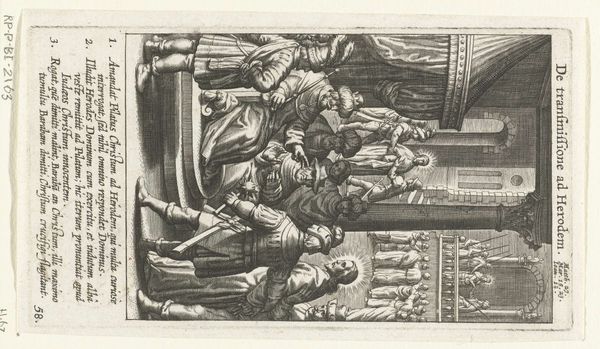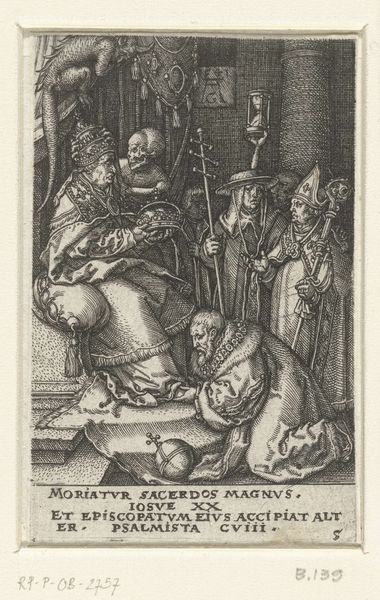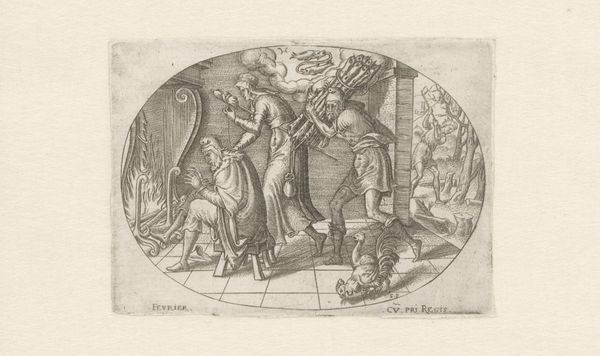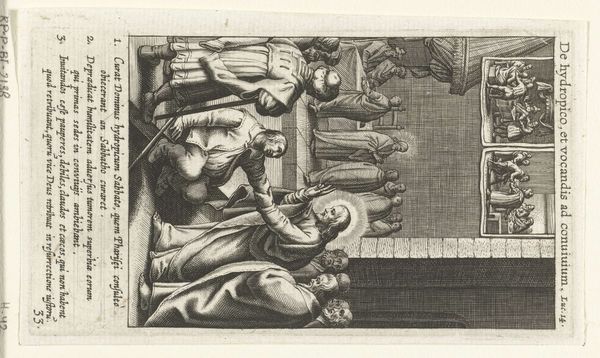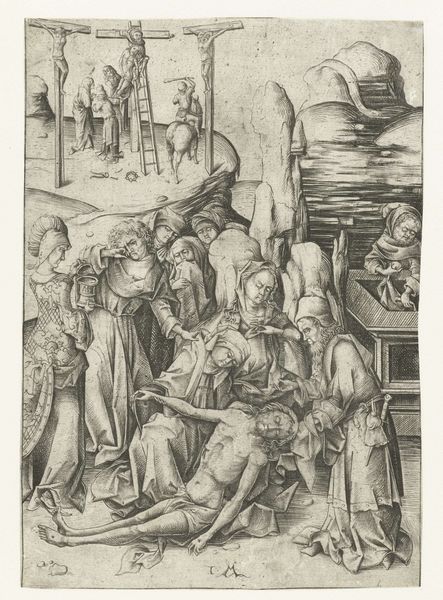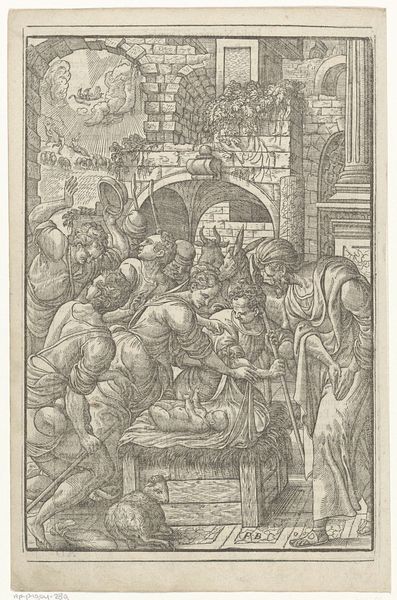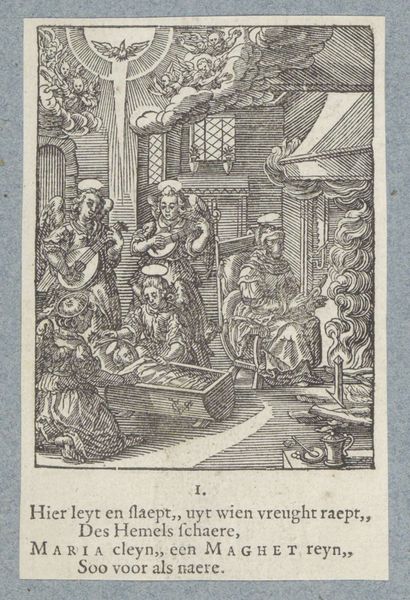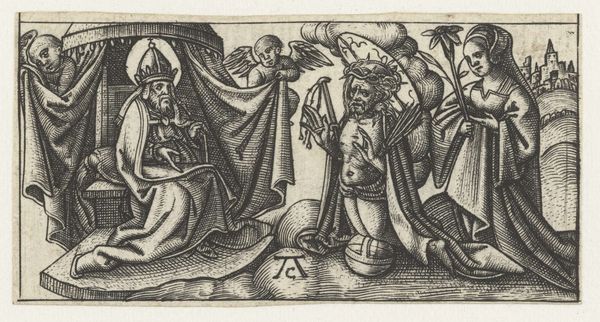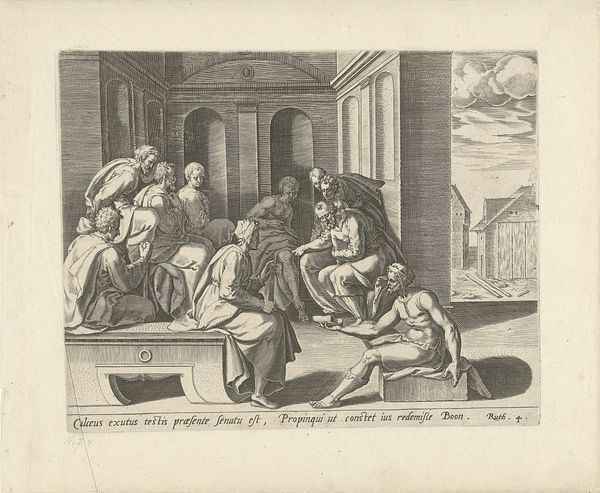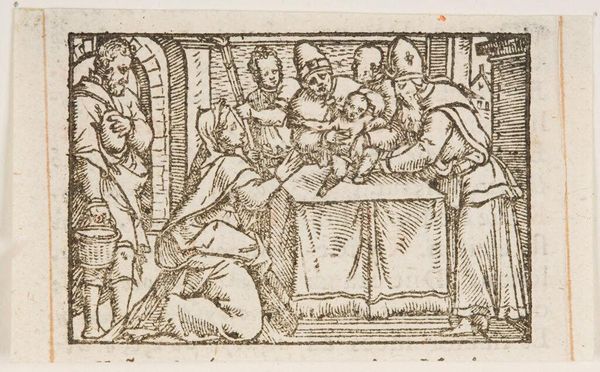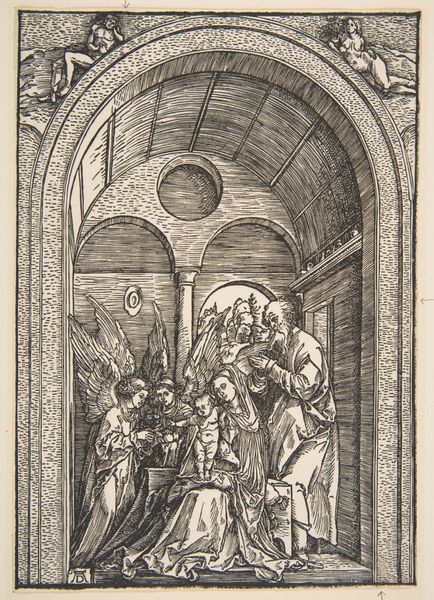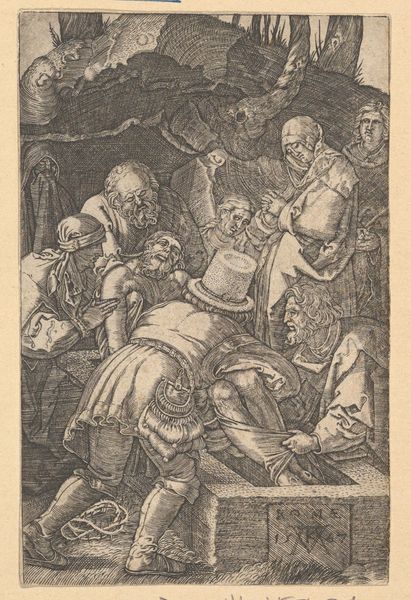
Christus vertelt hogepriesters en farizeeën de parabel van de onwaardige bruiloftsgast 1590 - 1622
0:00
0:00
boetiusadamszbolswert
Rijksmuseum
print, engraving
#
baroque
# print
#
old engraving style
#
figuration
#
history-painting
#
engraving
Dimensions: height 133 mm, width 75 mm
Copyright: Rijks Museum: Open Domain
Editor: This is a 17th-century engraving, made between 1590 and 1622, by Boëtius Adamsz. Bolswert, titled "Christus vertelt hogepriesters en farizeeën de parabel van de onwaardige bruiloftsgast," or "Christ Telling the High Priests and Pharisees the Parable of the Unworthy Wedding Guest." The stark contrast and crowded composition feel quite intense. What do you see in this piece, and what stories does it tell beyond the biblical narrative? Curator: This print offers a fascinating glimpse into the socio-political dynamics of the era. While ostensibly illustrating a biblical scene, Bolswert’s work also participates in the polemical climate of Reformation Europe. The artist subtly critiques religious authority through the representation of the Pharisees. How does their portrayal resonate with the historical tensions between Protestant and Catholic interpretations of scripture and power? Editor: I see what you mean. The Pharisees are clustered so closely around Christ, almost menacingly. Does that suggest something about the perceived corruption of religious institutions at the time? Curator: Precisely. Their proximity to Christ, yet their apparent resistance to his message, highlights a concern with outward displays of piety masking inner hypocrisy – a recurring theme in critiques of established religious orders. Also, the parables themselves are revolutionary claims that invert social and political order. The last will be first. How do you think the imagery here might reinforce that message? Editor: The cloud vignettes in the corners also emphasize the contrast between earthly and divine judgement. It makes me think about power and who gets to wield it. Curator: Exactly. We can also view this through a lens of intersectionality – noting how religious, political, and class hierarchies are all being subtly challenged here. Reflecting on this artwork today, what contemporary resonances do you find with its themes of power, hypocrisy, and social critique? Editor: It's amazing to consider how art from centuries ago can still speak so powerfully to issues we face today. I appreciate that this image encapsulates that feeling in terms of social inequality and judgment. Curator: Indeed, seeing this engraving through an activist lens really brings the themes of justice and societal critique to the forefront. I'm also glad to have learned a bit from your contemporary viewpoint on this powerful image.
Comments
No comments
Be the first to comment and join the conversation on the ultimate creative platform.
